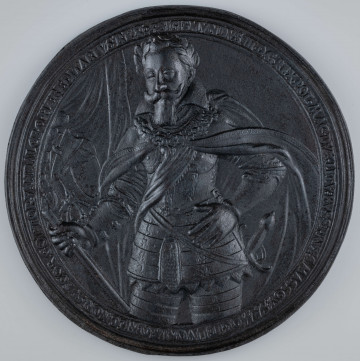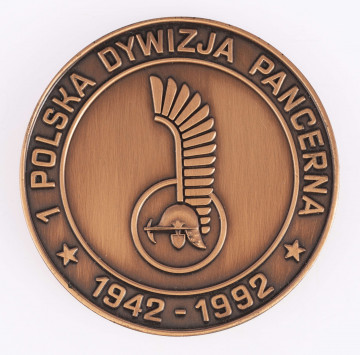
Sigismund III Vasa
1611
National Museum in Lublin
Part of the collection: Polish medallic art from the 16th to the 17th c.
Polish medal-making, like other fields of art, was subject to external influences and at the same time represented the characteristics of particular stylistic epochs. The first medals connected with Poland appeared during the Renaissance. As interest in the art of medal-making grew, so did the number of artists. Many of them came from abroad and introduced at first Mannerist and then Baroque elements in Polish medal-making. One of the first representatives of developed Baroque was Sebastian Dadler. He was born in Strasbourg, and trained as a goldsmith in Augsburg. In 1621 he found employment at the Saxon court in Dresden, where he became interested in medal-making. At the beginning of 1634 he came to Gdańsk where he worked until 1647. His time in Gdańsk resulted in many medal works, often commissioned by the Polish royal court. Significantly, Dadler did not break his contacts with Poland even after he had left the city. An example is the medal commemorating the liberation of Kiev in 1651, at a time when he had already been living in Hamburg for three years. Working for the royal court in Poland, the medallist usually documented important historical events, such as the wedding of Władysław IV to Cecilia Renata and, after her death, to Ludwika Maria Gonzaga, or the victories of the Polish army. Such is the character of the presented object. It is a late copper cast presenting only the obverse of the medal from 1636. The original work, minted in gold or silver, was dedicated to the victory of the Polish and Lithuanian armies over the Russians during the siege of Smoleńsk in 1633-1634 and to the achievements of Władyslaw IV. The Smoleńsk Victory is depicted on the obverse in the form of a scene of homage paid to the king and the hetmans Marcin Kazanowski and Krzysztof Radziwiłł by the defeated Russian commanders. The reverse, not included in the presented cast, depicted a scene of the reception of Turkish and Swedish deputies, which symbolized the renewal of the peace treaty with Turkey (19 August 1635) and the truce with Sweden in Sztumska Wieś (12 September 1635). The inscription placed in the rim of the reverse, which also referred to the scene depicted on the obverse, was extremely meaningful. It praised Władysław IV with the words: “Both in war and in peace worthy of honour”.
Leszek Poniewozik
Author / creator
Dimensions
cały obiekt: width: 78,8 mm
Object type
medal
Material
copper
Creation time / dating
Creation / finding place
Owner
The National Museum in Lublin
Identification number
Location / status

1611
National Museum in Lublin

2004
National Museum in Lublin

1992
National Museum in Lublin
DISCOVER this TOPIC
Castle Museum in Łańcut
DISCOVER this PATH
Educational path